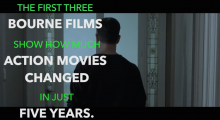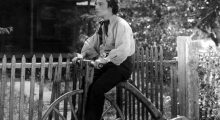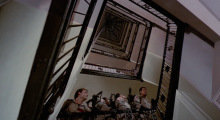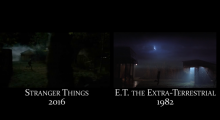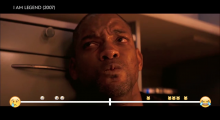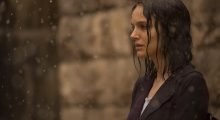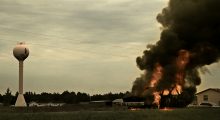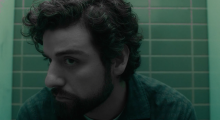Filmmaker Videos
-
Watch: How the Bourne Movies Changed Film Fights

In his newest video essay, Kevin B. Lee breaks down how the Bourne series has changed the style of film fighting as the series continued. As he notes in a supplementary essay at Fandor, “At times it feels like a hodgepodge of fight shots dropped in random, non-linear order—something approaching an impressionist abstraction of action filmmaking. So it was somewhat of a revelation that, upon taking a fight scene from The Bourne Ultimatum and slowing it down to half speed, I could actually discern that one split-second shot from a fight linked up rather well with the next, in a spatially coherent linear sequence.”
-
Buster Keaton’s The General Turns 90 with Tour and Live Score

To celebrate the 90th Anniversary of Buster Keaton’s classic film The General, throughout August Portland’s historic Hollywood Theatre and Oregon Film will present a state-wide tour of the film with a new live score composed by film composer Mark Orton. Above you can check out a trailer for the film presentation. Considered one of the best comedies of the silent era, The General finds hapless Southern railroad engineer Johnny Gray (Buster Keaton) facing off against Union soldiers during the American Civil War. When Johnny’s fiancée, Annabelle Lee (Marion Mack), is accidentally taken away while on a train stolen by Northern forces, Gray pursues the soldiers, using various modes of transportation in […]
-
Watch: “Kubrick/Tarkovsky”

It’s one auteur illuminating similarities with another’s work in another split-screen video. This time around, it’s Stanley Kubrick on the left and Andrei Tarkovsky on the right.
-
Watch: 39 Staircases in the Cinema

This one is pretty straightforward: in honor of Alfred Hitchcock’s The 39 Steps, a supercut of 39 stairwells and their varied treatment across film history.
-
Watch: ’70s and ’80s Films Referenced in Stranger Things

A surprise critical hit for Netflix, the twisty sci-fi/horror/thriller/etc. series Stranger Things has also gained a great deal of attention for its knowing, deliberate references to classics of ’70s and ’80s genre films. Ulysse Thevenon has put together this split-screen video essay, with Stranger Things on the left and its reference point on the right. For another thorough overview in written form, check out Scott Tobias at Vulture.
-
Watch: “Lars Von Trier – The Deconstructionist”

The ever-divisive Lars Von Trier is re-examined by Lewis Bond in this thorough video essay, which examines the way the Danish provocateur breaks down rules about the forms of cinema and then recombines them. Comes with lots of context and an amusing press conference clip of Willem Dafoe explaining on-set improv in Antichrist, where he didn’t even know if he’d be naked or not before starting a scene.
-
Watch: “Cats Die Funny, Dogs Die Sad”

When a dog dies on screen it is universally portrayed as upsetting. The demise of a cat, meanwhile, is often used as a gag. Over at Fandor Keyframe, Jacob T. Swinney takes a look at the discrepancy in emotional response when an animal dies on screen.
-
Trailer Watch: Natalie Portman’s A Tale of Love and Darkness

Natalie Portman optioned the rights to Amos Oz’s bestselling memoir A Tale of Love and Darkness more than eight years ago. The Israeli-born actress reportedly met with the writer before adapting the screenplay herself. Now the film, written, directed, and starring Portman, gets a trailer (above). Shot by veteran Polish DP Slawomir Idzia, the Hebrew-language film tells the story of a troubled young mother, Fania Oz (Portman), as she raises young Amos (Amir Tessler) during the turbulent early days of the state of Israel. Focus World will release the film, which premiered at Cannes last year, in theaters on August […]
-
Watch: Director Jack Pettibone Riccobono on The Seventh Fire, Having a Subject in Jail and Presenting a Film at the White House

In The Seventh Fire, first-time director Jack Pettibone Riccobono follows the relationship between Rob, a gang leader on a Native American reservation, and his 17-year-old protégé, Kevin. Their connection becomes increasingly complicated when Rob heads to his fifth stint in jail. The film boasts an impressive set of executive producers in Terrence Malick, Natalie Portman and Chris Eyre. The Seventh Fire opens at the Metrograph in New York on July 22, and at the Laemmle Royal in Los Angeles on July 29. I talked to Riccobono about the difficulties of having a subject sentenced to jail time while shooting, presenting the […]
-
Watch: “The Coen Brothers: Green”

In his latest video essay, Jacob T. Swinney goes the extra mile to highlight the Coen brothers’ use of green in their films by desaturating everything that isn’t green to black and white (or at least as close as possible).
